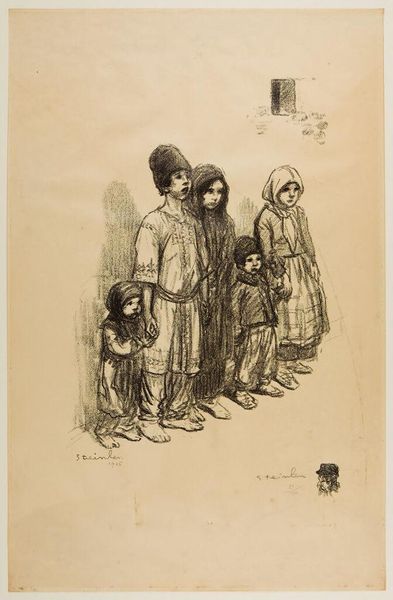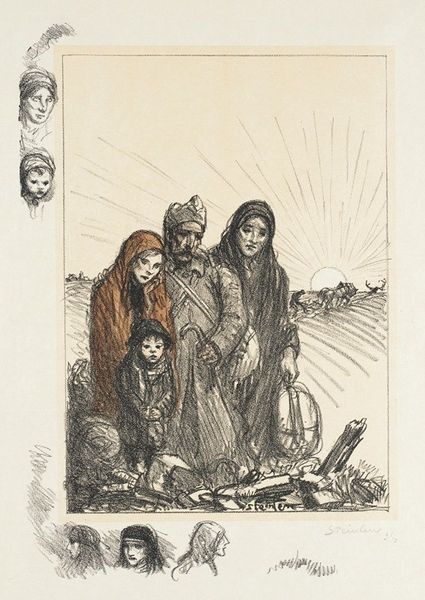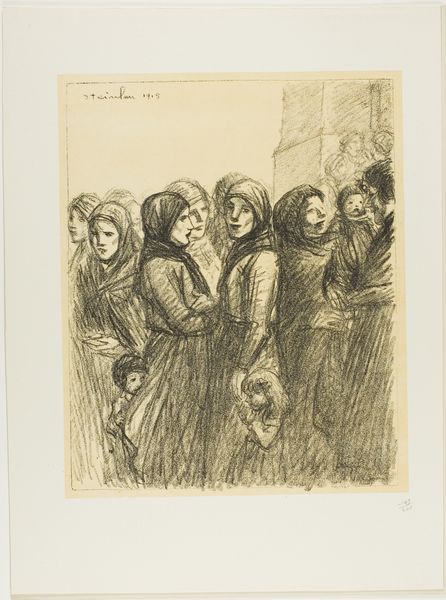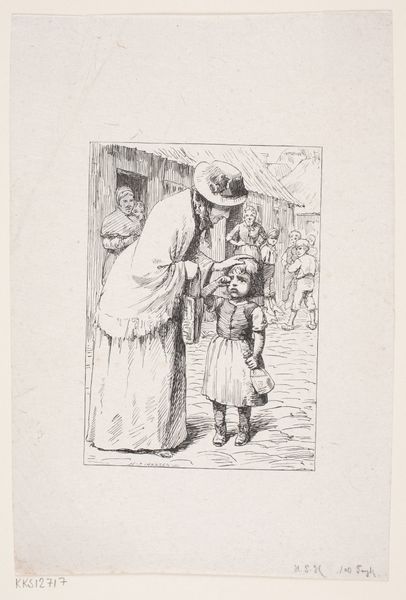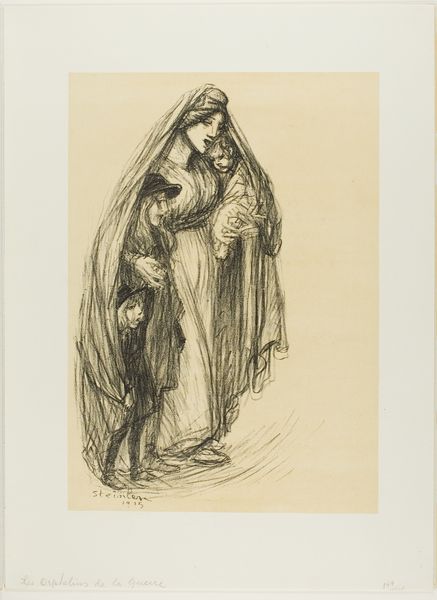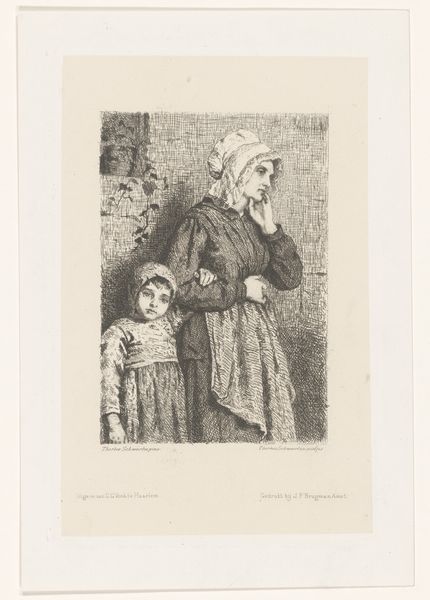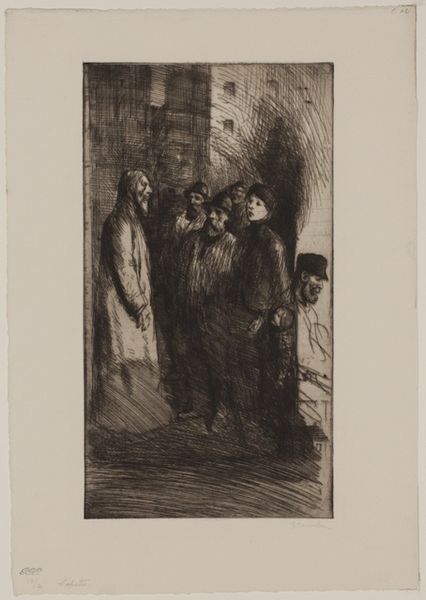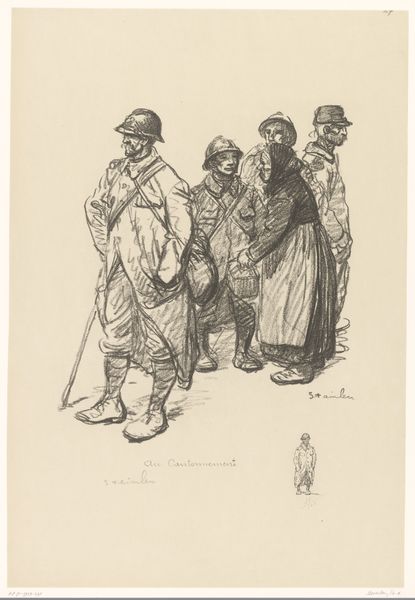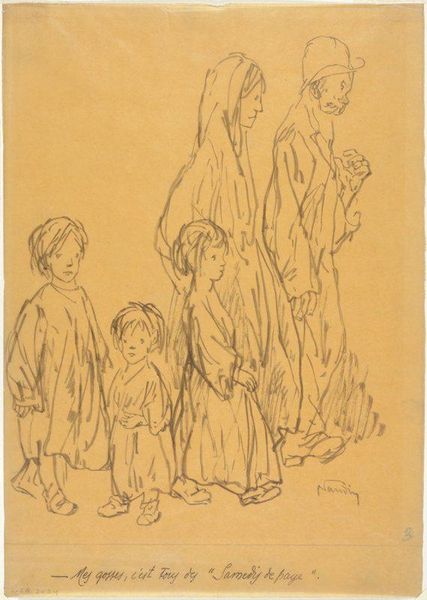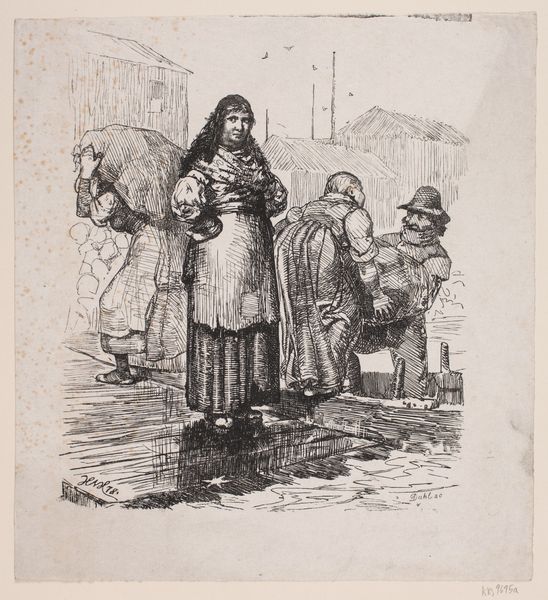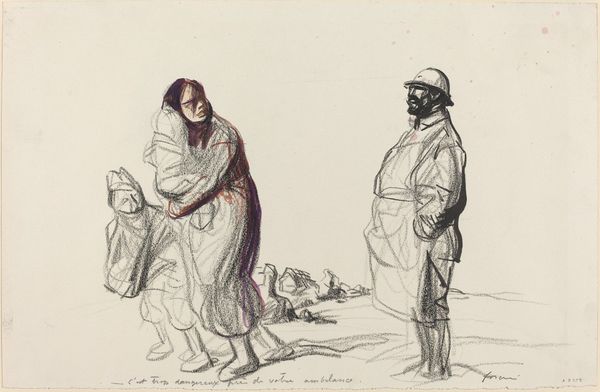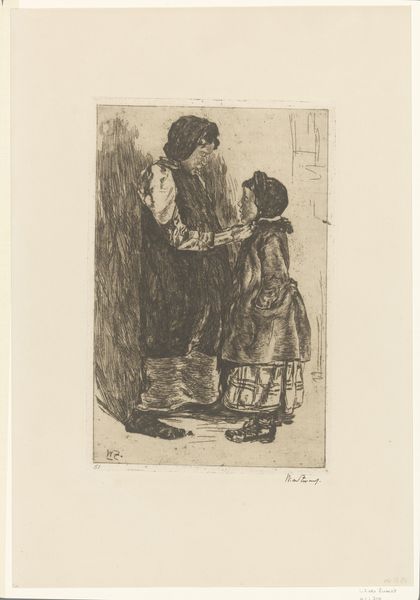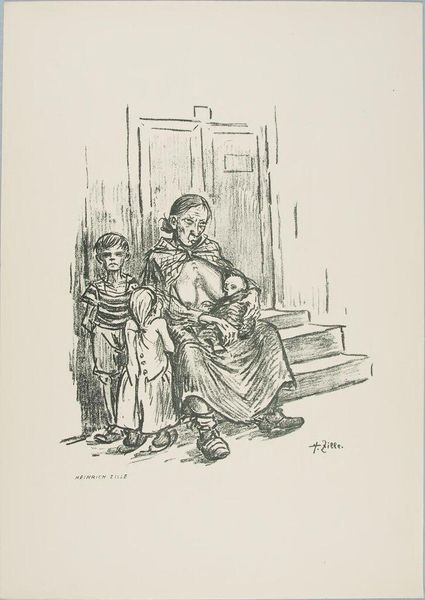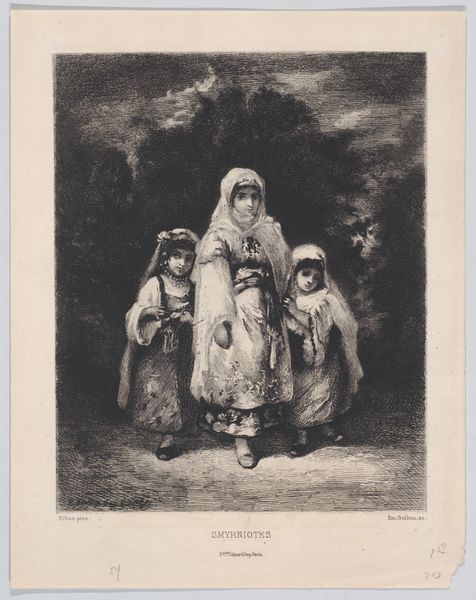
drawing, lithograph, print, paper, pencil
#
portrait
#
drawing
#
lithograph
# print
#
figuration
#
paper
#
pencil
#
genre-painting
#
realism
Dimensions: 384 × 282 mm (image); 530 × 373 mm (sheet)
Copyright: Public Domain
Curator: Immediately striking is the weight of responsibility etched onto the faces of these children. The solemn expressions and lined up presentation create a sobering effect. Editor: This lithograph by Théophile Alexandre Steinlen, titled "Serbian Children," was created in 1915 and is part of the collection at the Art Institute of Chicago. The medium itself—pencil and lithographic crayon on paper—is central here. There is a starkness in the texture that seems intrinsic to the work. Curator: Absolutely. The simplicity of the lithograph allows the viewer to focus on the clothing and the lack of adornment. Notice the plain cloth, the absence of elaborate details or vibrant dyes in their clothes. These elements tell us so much about the impact war had on available resources and production of goods in civilian life. Editor: It is powerful how Steinlen chose to depict these children at this historical moment. Context is key to understanding Steinlen’s oeuvre: this was the first year of the Serbian occupation during World War I. So, it’s more than a mere portrait, it becomes a statement about innocence amidst a landscape of brutality and loss. Curator: I'd suggest Steinlen isn’t simply presenting reality but actively participating in creating meaning, by meticulously shaping the materiality to echo a wider commentary. The scarcity of embellishment across the work highlights the socio-economic deprivation of this vulnerable group and evokes an era where labor and resources were repurposed to serve the war effort. Editor: The distribution of prints such as these also becomes important when discussing this image. In what publications, exhibition spaces or charitable networks did the image appear, and who were the likely consumers? Curator: Considering all of the above allows for a richer understanding of both the piece’s creation, function and the effect it had within a culture shaken to its very core by the Great War. Editor: By layering insights into the techniques with historical understanding, we begin to realize the multiple layers of meaning imbedded in this lithograph.
Comments
No comments
Be the first to comment and join the conversation on the ultimate creative platform.
